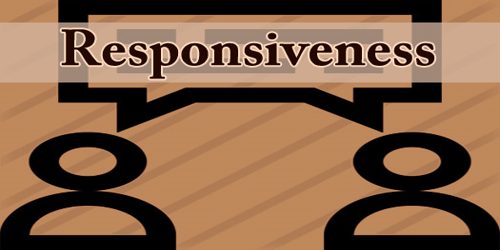In a recent collaborative study, PIK Professor Michael Platt analyzes how the thought process of buyers and sellers evaluating a purchase plays out in their brains. These choices could be seen in pupil dilating and eye movements.
Trading makes the world go ’round. The modern economy depends on buying and selling, whether it be for goods and services, stocks, or intellectual property, yet people are frequently hesitant to exchange what they have for what they do not, even when doing so is clearly unreasonable. This phenomenon is known as the “endowment effect,” and it limits trade efficiency.
In a new study in the journal Science Advances, Penn Integrates Knowledge University Professor Michael Platt and collaborators at Zhejiang University have developed a framework to describe how buyers and sellers make decisions during trading.
“People often make irrational decisions, and we’re interested in understanding why,” says Platt, the senior author on the study.
The scientists also discovered various physiological systems that support this decision-making process. They discovered relationships between the chance of a contract being reached and the location (and duration) of the buyers’ and sellers’ gaze as well as the extent of their pupils’ dilation.
When both buyers and sellers focused on possible gains rather than losses and when both buyer and seller’s pupils dilated, a transaction was more likely to be made. The endowment effect has been established in both real-world contexts and lab studies that tracked behavior and brain activity, but the underlying mechanisms are unclear.
The endowment effect is explained by two basic, mutually exclusive ideas. The first is related to loss aversion since people are less likely to want to part with something they already own because they experience loss more intensely than gain.
“In trading situations, most people focus on what they might lose rather than what they might gain because our vigilance system has evolved to always be on the lookout for threats,” Platt says.
According to the second explanation, inertia is what causes the endowment effect since both buyers and sellers are hesitant to change the status quo. As a result, they both need additional incentives, such as a discount or a greater premium, to get over their reluctance and reach an agreement.
People have to accumulate more evidence before they will make a decision to change the status quo, and this takes more mental effort. All else being equal, your pupils open up when you’re about to do something unexpected or surprising.
Professor Michael Platt
The goal of Platt’s team was to distinguish between the relative effects of risk aversion and inertia in order to assess the influence of the endowment effect on trading choices. In order to achieve this, the researchers tested participants’ propensity to buy and sell lottery tickets in a series of lab studies before utilizing a video-based tracking system to keep an eye on the participants’ gaze and pupil diameter.
They also kept track of how long the participants took to make their decisions. Then, they used this data to build a model to describe how buyers and sellers accumulate evidence.
As expected, the endowment effect was evident for both buyers and sellers. In contrast to vendors, buyers were slower to decide whether to buy than to decide not to buy, indicating hesitation to purchase lottery tickets at most prices.
While buyers were more interested in the sum they would have to pay, sellers were more interested in the lottery tickets they were selling. However, sellers spent more time inspecting their lottery tickets than did purchasers, indicating that loss aversion affects sellers more than buyers in the endowment effect.
“When you look at something, it amplifies the importance of that object or information in the brain,” Platt says. “And because people tend to look more at information they value more, there’s a feedback loop; the more you look at something, the more you value it and vice versa.”
The likelihood of a deal was highest when both sides paid attention to their potential rewards, i.e., when the buyer concentrated on the lottery ticket and the seller on the price. The researchers also discovered that synchronized pupil dilation might be used to predict successful negotiations because sellers’ pupils tended to dilate when they agreed to sell, and buyers’ pupils did the same when they agreed to buy.
The researchers believe that pupil dilation is more likely a signal of an underlying physiological mechanism than a causal factor, notwithstanding the possibility that gaze, as a function of attention, may have a role in the decisions made by traders. People’s pupils widen to adjust to low light conditions, but they can also widen when they are physiologically aroused and norepinephrine, or adrenaline, is released, as can happen when they are exerting more mental effort.
“People have to accumulate more evidence before they will make a decision to change the status quo, and this takes more mental effort,” Platt says. “All else being equal, your pupils open up when you’re about to do something unexpected or surprising.”
Though the researchers didn’t manipulate the participants’ gaze in this study, previous research has shown that trading decisions can be manipulated by making certain elements more visual and thereby attracting the buyer or seller’s gaze.
“By making the price bigger, brighter, or more colorful, without actually changing its monetary value, you can actually increase the likelihood that someone will accept a deal, just by making them spend more time looking at the price,” Platt says.
By reducing the endowment impact, these findings may help to direct interventions that increase the effectiveness of free markets. Given how simple it is for software to track where individuals are looking and for how long, they might also have an impact on consumer protection.
The study also reveals some fascinating information about the underlying processes that underlie our decision-making. “The way our decision-making process is yoked to attention is not uniquely human,” Platt says. “It doesn’t have anything to do with what we’ve learnt or our culture; it emerges from biology and the way our brains are wired.”
















